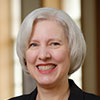This article is more than 5 years old.
Maximizing Inclusivity and Minimizing Apathy (MIMA) @ WFU
On Thursday, June 28th and Friday, June 29th attended Wake Forest’s 2nd Biennial institute on Maximizing Inclusivity and Minimizing Apathy (MIMA). This is a two-day long workshop put on by the Office of Diversity and Inclusion. While the previous MIMA institute was geared towards faculty and developing inclusive pedagogy, this year’s institute was open to faculty and staff and focused on the recruitment and retention of underrepresented faculty, staff, and students. The event was hosted in the Magnolia Room at WFU. Shayla Herndon-Edmunds and José Villalba were the facilitators.
Day One: Understanding Recruitment, Retention, and Representation
Day one of MIMA included several sessions to help participants understand the issues of recruitment and retention as they relate to Wake Forest’s community:
Session #1: Policy, Programming, and Practice (Mary Beth)
The focus on this session was in adopting a mindset that allows for greater diversity and inclusion throughout the institution. This can be achieved by reviewing policies, programs and practices to identify and remove incidental bias built into our established 3Ps. We have a long standing tradition of appreciating tradition on this campus, and some of those initially harmless practices might be hampering our desire to increase diversity and inclusion. A question was raised about the difference between “equality and equity” and José responded with this easy to remember mnemonic device: “Diversity is being invited to the party. Inclusion is being asked to dance. Equity is everyone having dancing shoes.” In truth, diversity and inclusion goals, as hard as they are, are easier than equity. Equity gets into the nitty gritty of making sure everyone has the kind of shoes they want in the color they want and in the size that they want. It was a powerful representation of a complex subject, and once he said it, everyone at my table grabbed a pen to write it down. The other takeaway from this session was the value of building policies, programs and practices with universal design. Not only will we develop best practices that meet those on the fringe, we will also be enabling, or not hindering, those in the center.
Session #2: Why Does Representation Matter? A Quantitative Perspective (Amanda)
This session explored both the quantitative and qualitative data available about the experiences of marginalized groups on campus. The most authoritative places to check for quantitative data are the WFU Factbook, which can be found on the WFU Institutional Research website, and the Office of Diversity and Inclusion’s Data and Reports webpage. We spoke at length about the limits of quantitative data in telling the stories of marginalized groups. For example, when international students were asked how positive or negative their experiences on WFU’s campus had been, they rated their experiences as a 2.67. Obviously, that’s not a great number, but when illustrated with a WFU bias report incident about an international student being the victim of food throwing and racial slurs, the reality of the situation really hits home. Ultimately, using a mixed methods approach (quantitative and qualitative) is best when considering how best to hear about the experiences of marginalized groups on campus.
Session #3: The Lived Experiences of Underrepresented Groups on Campus (Tanya)
Shayla started her presentation by having audience members read quotes appearing on her slides, representing experiences here at Wake Forest:
- “Finally, I had to advocate for myself.”
- “I experienced overt racism, and my colleagues thought I took it too seriously.”
- “We are not at the table when decisions are made.”
- “I am constantly second-guessed.”
- “Wake codifies behaviors allowing people to act out.”
- “I need people to have my back.”
In our small group discussions, we discussed these perspectives and who they could possibly be from, and whose perspectives we would add. Shayla then revealed every comment was from an African-American woman, part of an emotional support and networking group she oversees who were asked to share their experiences. Shayla had asked this group to discuss what it is like for them having these experiences being the norm for them at Wake Forest.
We then watched a Ted Talk by Melody Hobson, titled Color Blind or Color Brave?
Please watch this talk–the core theme is all about “How Did They Treat You?” from the perspective of people of color.
Shayla then discussed Wake’s need for both systemic and individual changes, and the larger question ultimately is: Who Does Wake Forest want to be? How are people affirmed, supported, and kept safe? It is the responsibility of those participating today in the MIMA workshop to know these facts from here on out and to ensure that everyone belongs and is valued. We also need to consider the voices of those no longer here (and consider WHY they are not at Wake Forest). Shayla needs our awareness about these issues as we continue to recruit and retain employees. She closed her presentation by describing behaviors during the developmental stages of intercultural development, beginning with denial, then polarization, minimization, acceptance, and adaptation.
Session #4: Beyond Belonging Here: Better Practices for Recruitment and Retention (Lauren)
This session delivered information from HR’s Carmen Canales, Kriss Dinkins, and Eric Proctor with a practical tips approach. After noting that there is currently a talent shortage and it is an employee market, Carmen gave her top ten tips:
- Question everything
- ABR = always be recruiting (anyone might be a future WFU employee)
- 2018 is calling (tweet, post job openings without missing a generation — HR can help)
- Offer permission to be raggedy (lighten up a little; we’re all learning)
- Work hard to keep your talent (e.g. write a thank you note to a colleague)
- Live the platinum rule
- Demonstrate visible momentum (while hiring, because it is competitive)
- Utilize a strengths-based approach
- Dress rehearsals and debriefs (there is diversity of thought within HR, but unity to campus — a thoughtful coordinated approach)
- Whatever your title, lead
Some highlights from Kriss about searches to fill positions included the understanding that Workday should make application for jobs easier since candidates can use LinkedIn or a ready CV to apply. HR can help with where to market a job and increase our diversity efforts. The Higher Education Recruitment Consortium (HERC) is a network that helps with recruiting, including for dual career. Kriss also mentioned “sourcing passive talent” meaning “people who are not looking to make a career change,” and making cold calls as well as using social media to get the word out about an open position. He recommends ensuring that search committees are diverse to help in making final recommendations to the hiring manager(s) and to “woo” rather than “interrogate” candidates. HR can come provide a search committee with ground rules (such as with confidentiality and legal / illegal questions).
In covering recruitment and retention, in my opinion, Eric talked a bit about where Wake Forest shines compared to other places. He mentioned recognition events for milestones in years of employment and the retiree luncheon. He talked about being welcoming with physical space (and showed a photo of a new hire lounge with chalkboard walls) and digital space (website now has text for images and closed captioning on videos, an all gender restroom directory and a dual career assistance webpage). HR assesses such efforts with Google Analytics for the website and Glassdoor.com, which has public reviews about engagement at place of employment (like Yelp, but for the workplace). Wake Forest University is 75% recommended to a friend. Eric also mentioned that Workday can be leveraged to maximize diversity and inclusion: for example, if our diverse candidates were not making it past phone screens, we would want to do something about that. Workday has 10 configurable dashboards.
Day Two: Developing Your Approach to Recruitment and Retention
Day two of MIMA involved creating your own plan (either as an individual or for your unit) for furthering recruitment and retention at Wake Forest.
Mary Beth’s Reflections
I and many others on our reflections for Day 1 mentioned the “making sure everyone has dancing shoes” reference. I found the most powerful take away that our decision to move to a more diverse and inclusive campus might need to challenge the status quo. We were building both a common language, and a common goal, and identifying allies in the room that we can lean on to ensure a more equitable WFU in the future.
Lauren’s Reflections
I valued a glimpse into the experiences of minority groups here at Wake Forest; connecting in breakout discussions with a diverse group of colleagues at my table, who work in other parts of the University; seeing the aforementioned TED talk and the Intercultural Development Chart (2015, from IDI, LLC). Also Shayla mentioned after showing that chart, that UCLA research has determined that the brain has the same reaction to feeling excluded as it does to physical pain. Participation in this had the same level of value as our Dear White People viewing discussions, increasing my knowledge, understanding, and I hope empathy too, which I hope can help with retention and recruitment both. I am also now aware of how some of Wake Forest’s resources can be more fully deployed during recruitment.
Tanya’s Reflections:
I am so glad I was able to attend the MIMA workshop. The presentations were thought-provoking and I found myself thinking about parts of the presentations over the weekend. I also had time to make notes on how to incorporate diversity and inclusion into our Special Collections work in the areas of collection development, outreach, and instruction–they will definitely be incorporated into our FY19 Goals. I was also inspired to be a better ally whenever I am needed, in order to make Wake Forest a more inclusive place.
Amanda’s Reflections
After reflecting on how I can best personally impact recruitment and retention, I decided that my efforts were best focused on retention of students, which is the area I work in the most. This school year, I’m going to focus on being more intentional with my advisees — taking better notes during and after our meetings, following up throughout the semester, and remembering them on important events like their birthdays. One idea that struck me is that just saying hello can mean a lot, so in LIB 100, I plan to focus more efforts on before-class conversations and interactions and keeping more up-to-date on university sports and events.



4 Comments on ‘Mary Beth, Tanya, Lauren, and Amanda at MIMA’
This sounds amazing! Thanks for the post and these personal reflections! They are much appreciated.
Thanks to all of you for sharing your experiences! Amanda, those are great suggestions as I think about teaching and advising for the first time this year. I’m going to try to implement some of those as well!
Thank you for the glimpses into this important work. Retention is where I focus my attention – on doing my best to be inviting and meeting people where they are, rather than just doing things my way, one way. Hopefully ZSRians will continue to participate in opportunities like this!
MIMA sounds like a valuable experience. I particularly liked HR’s recommendation to “offer permission to be raggedy” – YES! We are all learning, we will made mistakes, nothing will be perfect or smooth, and that is absolutely OK. José’s dancing shoes example reminds me of a similar explanation I heard years ago that stuck with me, “equal does not mean equitable.” Having short, memorable phrases/examples is critical for us to have as we do this hard work. Thank you all for sharing!